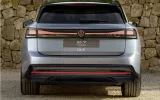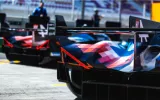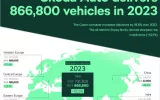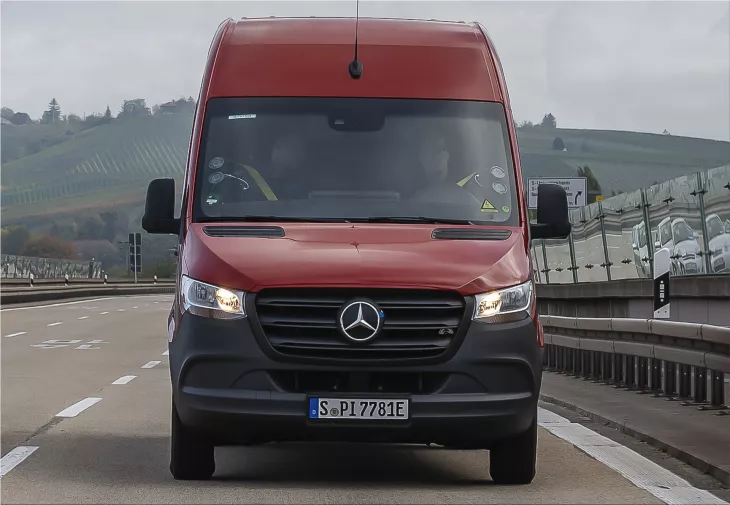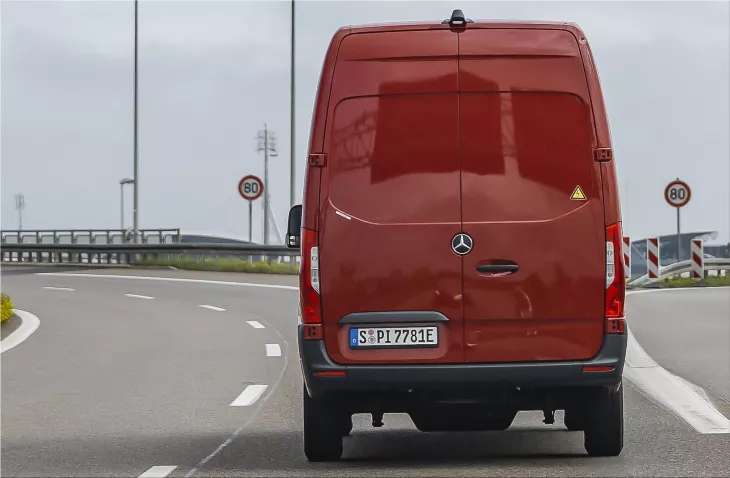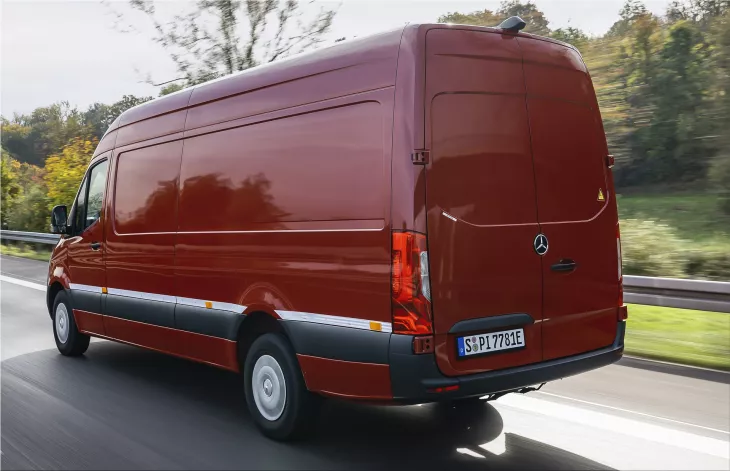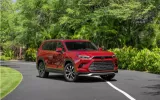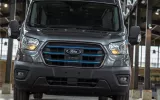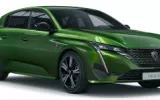A while ago, a prototype of the new Mercedes-Benz eSprinter completed a limited-access test drive. The trip started at the Mercedes-Benz Museum in Stuttgart and ended at the Munich Airport, all on a single charge. At a rate of 21.9-kilowatt hours per hundred kilometers, this is equal to a distance of 475 kilometers. Despite the route's high fuel consumption due to the majority of highway driving and the ascent of the Swabian Jura, it was still a success. The new Mercedes-Benz eSprinter electric van impressed us during our test drive, and we agree with that assessment.
The new Mercedes-Benz eSprinter will offer three distinct battery capacities for its debut. We chose the largest of the three possible pre-production vehicle configurations for this evaluation. It was decided to employ an extra-long Mercedes-Benz eSprinter with a high roof to emphasize how well the new Mercedes-Benz eSprinter is optimized for efficiency, making it a viable electric van configuration for CEP (courier, express, and parcel service). The Mercedes-Benz eSprinter is one of the most adaptable big electric vans on the market because of its wide variety of possible configurations, high load capacity, and long range.
On October 19, 2022, we measured how much we were using. The trip from Stuttgart to Munich was not performed on a closed-off test track or even a test bench to simulate the real-world conditions of express delivery, but rather in city traffic and on federal roads and highways. A TÜV Süd inspector rode in the passenger seat with the Mercedes-Benz test driver. TÜV Süd, an independent testing organization, has verified that the electric van is in proper working condition and has a fuel consumption rate of 21.9 kWh/100 km measured by the instrument cluster during a round-trip drive from Stuttgart to Munich and back.
Driving from the Mercedes-Benz Museum to the Mercedes-Benz plant in Untertürkheim and then to Göppingen and Ulm was meant to simulate a typical use in the CEP sector. We merged onto the freeway there. Both the A8 and the A99 led directly to Munich Airport. Afterward, we headed back to Stuttgart via the interstate and took the B313 and B10 to the Mercedes-Benz Museum at the Wendlinger Kreuz interchange. The total distance covered was 475 kilometers, with an average elevation change along the way of 785 meters (between the lowest and highest points). The range indicator showed roughly 20 kilometers when we got there.
Mercedes-Benz Vans continues to demonstrate its leadership in electric vehicles with the release of the new Mercedes eSprinter electric van. Clients were involved in the process of defining the requirements. The new eSprinter electric van will be far more adaptable thanks to its three battery options and several body configurations, such as panel vans and chassis for box bodies. This will attract a broader range of customers and expand the market for the product (besides Europe, for the first time also including the USA and Canada). Depending on the setup, the range can increase by more than 100% in comparison to the standard Mercedes-Benz eSprinter electric van. Beginning in the second half of 2023, the new eSprinter will be manufactured in Charleston (South Carolina, USA), Düsseldorf, and Ludwigsfelde, in that order.
Mercedes-Benz Vans' was ahead of its time regarding locally emission-free vans. There are currently four different battery-electric vans available to buyers: the Mercedes-Benz eVito Panel Van, the Mercedes-Benz eSprinter, the Mercedes-Benz eVito Tourer, and the Mercedes-Benz EQV. The new Mercedes-Benz eCitan and the EQT1 will eventually make the entire van lineup hybrid-free and all-electric.

